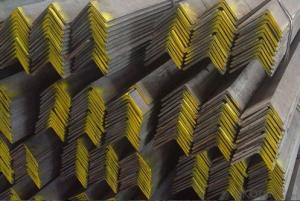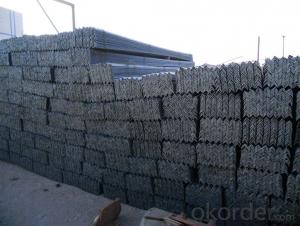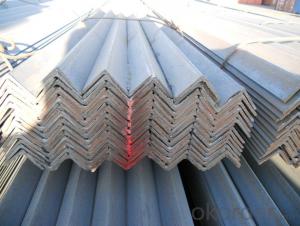Unequal Angle Steel Factory Price Carbon Steel
- Loading Port:
- Tianjin
- Payment Terms:
- TT or LC
- Min Order Qty:
- 29 m.t.
- Supply Capability:
- 24000 m.t./month
OKorder Service Pledge
OKorder Financial Service
You Might Also Like
Product Description:
OKorder is offering Unequal Angle Steel Factory Price Carbon Steel at great prices with worldwide shipping. Our supplier is a world-class manufacturer of steel, with our products utilized the world over. OKorder annually supplies products to European, North American and Asian markets. We provide quotations within 24 hours of receiving an inquiry and guarantee competitive prices.
Product Applications:
Unequal Angle Steel Factory Price Carbon Steel are ideal for structural applications and are widely used in the construction of buildings and bridges, and the manufacturing, petrochemical, and transportation industries.
Product Advantages:
OKorder's Unequal Angle Steel Factory Price Carbon Steel are durable, strong, and resist corrosion.
Main Product Features:
· Premium quality
· Prompt delivery & seaworthy packing (30 days after receiving deposit)
· Corrosion resistance
· Can be recycled and reused
· Mill test certification
· Professional Service
· Competitive pricing
Product Specifications:
HOT SALE CARBON STEEL ANGLES MOQ:1 TON
1. Competitive price
2. Good quality
3. Fast delivery
4. Best service
Standard Sectional Dimension mm mm | Weight kg/m | Standard Sectional Dimension mm mm | Weight kg/m |
25*25*3 | 1.12 | 90*90*6 | 8.28 |
30*30*3 | 1.36 | 90*90*7 | 9.59 |
40*40*3 | 1.83 | 90*90*10 | 13.3 |
40*40*5 | 2.95 | 100*100*7 | 10.7 |
45*45*4 | 2.74 | 100*100*10 | 14.9 |
45*45*5 | 3.38 | 100*100*13 | 19.1 |
50*50*4 | 3.06 | 120*120*8 | 14.7 |
50*50*6 | 4.43 | 130*130*9 | 17.9 |
60*60*4 | 3.68 | 130*130*12 | 23.4 |
60*60*5 | 4.55 | 130*130*15 | 28.8 |
60*60*6 | 5.37 | 150*150*12 | 27.3 |
65*65*6 | 5.91 | 150*150*15 | 33.6 |
65*65*8 | 7.66 | 150*150*19 | 41.9 |
70*70*6 | 6.38 | 175*175*12 | 31.8 |
75*75*6 | 6.85 | 175*175*15 | 39.4 |
75*75*9 | 9.96 | 200*200*15 | 45.3 |
80*80*6 | 7.32 | 200*200*20 | 59.7 |
80*80*7 | 8.48 | 200*200*25 | 73.6 |
FAQ:
Q1: Why buy Materials & Equipment from OKorder.com?
A1: All products offered byOKorder.com are carefully selected from China's most reliable manufacturing enterprises. Through its ISO certifications, OKorder.com adheres to the highest standards and a commitment to supply chain safety and customer satisfaction.
Q2: How do we guarantee the quality of our products?
A2: We have established an advanced quality management system which conducts strict quality tests at every step, from raw materials to the final product. At the same time, we provide extensive follow-up service assurances as required.
Q3: How soon can we receive the product after purchase?
A3: Within three days of placing an order, we will begin production. The specific shipping date is dependent upon international and government factors, but is typically 7 to 10 workdays.
Q4: What makes stainless steel stainless?
A4: Stainless steel must contain at least 10.5 % chromium. It is this element that reacts with the oxygen in the air to form a complex chrome-oxide surface layer that is invisible but strong enough to prevent further oxygen from "staining" (rusting) the surface. Higher levels of chromium and the addition of other alloying elements such as nickel and molybdenum enhance this surface layer and improve the corrosion resistance of the stainless material.
Q5: Can stainless steel rust?
A5: Stainless does not "rust" as you think of regular steel rusting with a red oxide on the surface that flakes off. If you see red rust it is probably due to some iron particles that have contaminated the surface of the stainless steel and it is these iron particles that are rusting. Look at the source of the rusting and see if you can remove it from the surface.
Images:
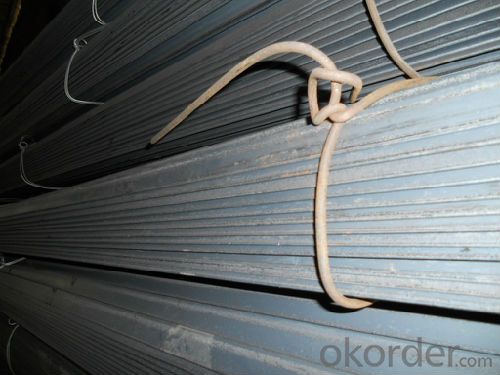
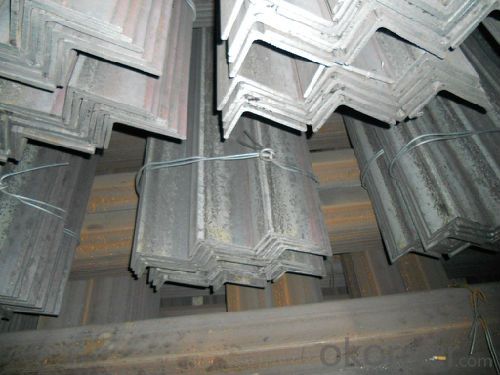
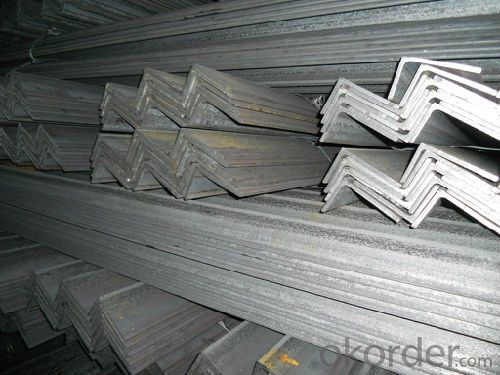
- Q:How do steel angles contribute to the resiliency of a structure?
- Steel angles contribute to the resiliency of a structure by providing additional strength and stability. They are commonly used in construction to reinforce corners and joints, helping to distribute loads and resist bending or twisting forces. This added structural support enhances the overall resilience of the building, making it more resistant to potential hazards such as earthquakes, high winds, or heavy loads.
- Q:What are the different grades of steel used for manufacturing steel angles?
- Manufacturing steel angles involves the use of various grades of steel. These grades include: 1. Mild Steel: This is the most frequently utilized grade for producing steel angles. It boasts a low carbon content and is reasonably priced. Mild steel angles are suitable for a wide range of applications and possess excellent weldability and formability. 2. High-strength low-alloy (HSLA) steel: This grade incorporates small quantities of alloying elements such as copper, vanadium, or niobium, which augment its strength and toughness. HSLA steel angles are commonly employed in structural applications that demand high strength and durability. 3. Stainless Steel: Stainless steel angles are crafted from alloys that contain a significant chromium content, offering outstanding resistance to corrosion. These angles find common usage in environments where corrosion poses a concern, such as coastal areas or chemical plants. 4. Carbon Steel: Carbon steel angles are comprised of a combination of iron and carbon, with carbon content typically ranging from 0.05% to 2.1%. The higher the carbon content, the stronger and harder the steel becomes. Carbon steel angles are frequently employed in construction and machinery manufacturing. 5. Alloy Steel: Alloy steel angles are created by introducing various alloying elements like manganese, nickel, chromium, or molybdenum into carbon steel. These additions enhance the strength, hardness, and resistance to wear and corrosion of the steel. Alloy steel angles find common usage in heavy-duty applications like mining equipment or industrial machinery. The selection of steel grade for manufacturing steel angles depends on the specific requirements of the application, including desired strength, durability, corrosion resistance, and cost considerations.
- Q:Can steel angles be used for solar panel installations?
- Indeed, steel angles are suitable for the installation of solar panels. Solar panels receive structural support and stability through the utilization of steel angles, whether they are affixed to rooftops or other structures. These angles are frequently employed to construct a framework or mounting system, ensuring the secure placement of the panels. Demonstrating strength and durability, steel angles possess the capability to endure the weight of the panels and any additional external forces, such as wind or snow loads. Moreover, steel angles can be conveniently fabricated and personalized to meet precise installation prerequisites, thus rendering them a versatile option for solar panel installations.
- Q:What are the different surface treatments for steel angles?
- There are several different surface treatments available for steel angles, each designed to enhance their durability, appearance, and resistance to corrosion. Some of the common surface treatments for steel angles include: 1. Hot-dip galvanizing: This process involves immersing the steel angles in a bath of molten zinc, which forms a protective coating on the surface. Galvanizing provides excellent corrosion resistance and is ideal for outdoor applications where the angles may be exposed to moisture and harsh weather conditions. 2. Powder coating: Powder coating involves applying a dry powder paint to the surface of the steel angles. The angles are then heated, causing the powder to melt and form a smooth, durable coating. Powder coating provides a wide range of color options and improves the angles' resistance to chipping, scratching, and fading. 3. Electroplating: Electroplating involves depositing a layer of metal onto the surface of the steel angles through an electrochemical process. Common metals used for electroplating include zinc, nickel, and chrome. Electroplating provides both aesthetic appeal and enhanced resistance to corrosion. 4. Priming and painting: Priming and painting involves applying a layer of primer followed by a coat of paint to the steel angles. Priming helps improve adhesion and provides a smooth surface for the paint to adhere to. Painting not only enhances the appearance of the angles but also provides some protection against corrosion. 5. Anodizing: Anodizing is typically used for aluminum angles rather than steel, but it can also be applied to steel. This process involves creating an oxide layer on the surface of the angles by subjecting them to an electrolytic process. Anodizing improves the angles' corrosion resistance, hardness, and color stability. It is important to choose the appropriate surface treatment for steel angles based on the specific application and environmental conditions they will be exposed to. Each treatment offers unique benefits in terms of corrosion resistance, aesthetics, and durability, so carefully considering these factors will help ensure the longevity and performance of the steel angles.
- Q:Can steel angles be used for framing purposes?
- Yes, steel angles can be used for framing purposes. Steel angles are commonly used in construction and engineering to provide structural support and stability. They are often used to create frames for buildings, bridges, and other structures. Steel angles can be easily welded or bolted together to form a strong and rigid frame. They are versatile and can be used in various framing applications, such as supporting walls, beams, and roofs. Additionally, steel angles are durable and have high strength-to-weight ratio, making them ideal for framing purposes.
- Q:Can steel angles be used in curtain wall systems?
- Yes, steel angles can be used in curtain wall systems. They are commonly used as support elements for attaching glass panels or other cladding materials to the structural frame of the building. Steel angles provide strength and stability to the overall curtain wall system.
- Q:What are the different methods of surface preparation for steel angles before painting?
- There are several methods of surface preparation for steel angles before painting. These include mechanical cleaning methods such as abrasive blasting, power tool cleaning, and hand tool cleaning. Chemical cleaning methods like solvent cleaning and alkaline cleaning can also be used. Additionally, steel angles can be prepared through the use of conversion coatings or by applying a primer or etching solution. The choice of method depends on factors such as the condition of the surface, the desired level of cleanliness, and the type of coating being applied.
- Q:Can steel angles be used in the construction of transmission line towers?
- Yes, steel angles can be used in the construction of transmission line towers. Steel angles are commonly used in the construction industry for various applications, including the fabrication of transmission line towers. These towers are used to support overhead power lines and require strong and durable materials to withstand the weight and stresses imposed by the transmission lines. Steel angles are ideal for this purpose as they offer high strength and structural integrity. They can be easily fabricated into various shapes and sizes, making them suitable for the complex geometries and load requirements of transmission line towers. Additionally, steel angles are corrosion-resistant, which is crucial for structures exposed to outdoor elements, such as transmission line towers. Furthermore, steel angles provide cost-effective solutions for transmission line tower construction. They are readily available in the market and can be easily sourced and manufactured. Their versatility and durability make them a popular choice for engineers and designers involved in the construction of transmission line towers. In conclusion, steel angles are commonly used in the construction of transmission line towers due to their high strength, structural integrity, corrosion resistance, and cost-effectiveness.
- Q:How do steel angles perform in terms of thermal conductivity?
- Steel angles have relatively low thermal conductivity compared to other materials. This means that they are not as efficient in conducting heat as materials such as aluminum or copper. However, steel angles still have moderate thermal conductivity, which allows them to dissipate heat to some extent. This property can be advantageous in certain applications where heat transfer needs to be controlled or balanced. Overall, while steel angles may not have the highest thermal conductivity, they still offer sufficient performance for many structural and construction purposes.
- Q:What is the bending capacity of a steel angle?
- The bending capacity of a steel angle refers to its ability to withstand and resist bending forces without experiencing permanent deformation or failure. This capacity is influenced by various factors such as the angle's dimensions, material properties, and the specific loading conditions applied. It is typically determined through rigorous engineering calculations and testing to ensure structural integrity and safety.
1. Manufacturer Overview |
|
|---|---|
| Location | |
| Year Established | |
| Annual Output Value | |
| Main Markets | |
| Company Certifications | |
2. Manufacturer Certificates |
|
|---|---|
| a) Certification Name | |
| Range | |
| Reference | |
| Validity Period | |
3. Manufacturer Capability |
|
|---|---|
| a)Trade Capacity | |
| Nearest Port | |
| Export Percentage | |
| No.of Employees in Trade Department | |
| Language Spoken: | |
| b)Factory Information | |
| Factory Size: | |
| No. of Production Lines | |
| Contract Manufacturing | |
| Product Price Range | |
Send your message to us
Unequal Angle Steel Factory Price Carbon Steel
- Loading Port:
- Tianjin
- Payment Terms:
- TT or LC
- Min Order Qty:
- 29 m.t.
- Supply Capability:
- 24000 m.t./month
OKorder Service Pledge
OKorder Financial Service
Similar products
New products
Hot products
Hot Searches
Related keywords
